This article was co-authored by Monique Capanelli. Monique Capanelli is a Plant Specialist and the Owner and Designer for Articulture Designs, an innovative design firm and boutique in Austin, Texas. With over 15 years of experience, Monique specializes in interior botanical design, living walls, event decor, and sustainable landscape design. She attended the University of Texas at Austin. Monique is a Certified Permaculture Designer. She provides plant and botanical design experiences, from small gifts to entire transformations, to shoppers as well as commercial clients including Whole Foods Market and The Four Seasons.
There are 9 references cited in this article, which can be found at the bottom of the page.
wikiHow marks an article as reader-approved once it receives enough positive feedback. This article received 14 testimonials and 93% of readers who voted found it helpful, earning it our reader-approved status.
This article has been viewed 308,564 times.
Dendrobium orchids are beautiful flowers that require careful attention but are overall very sturdy. Provide a moderately warm, humid, and spacious environment for your flower to help it thrive. Feed and water it weekly and makes sure it gets ample sunlight.
Steps
Providing a Healthy Environment
-
1Plant your Dendrobium orchid in a small pot. Dendrobium orchids do not produce extensive root systems so they thrive in smaller spaces. Choose a pot that extends no more than 1 inch (2.5 cm) beyond your plant's root mass. Do not plant this flower in a large planter or directly in the ground as it prefers the security of a tighter space.[1]
-
2Use a soilless potting medium. The dendrobium orchid does not thrive or grow in ordinary soil. Purchase a potting mixture that is specially formulated for orchids from a gardening store or online. Alternatively, choose your own soilless potting medium like fir bark, coconut husks, or moss.[2]
- Many pre-made potting mixes for orchids contain horticultural charcoal.[3]
Advertisement -
3Keep your orchid in a cool to moderately warm climate. Dendrobium orchids do best in an environment that is between 65–75 °F (18–24 °C). At night, they can tolerate a temperature drop to 55–60 °F (13–16 °C) It is best to keep them indoors where the temperature can be adjusted or monitored, especially in extreme seasons like summer and winter.[4]
- If you do put the plant outdoors during moderately warm weather, keep it out of direct sunlight and bring it indoors when temperatures drop at night.
- Note that temperatures on your window sills or near windows may be warmer or colder than the rest of your home.
-
4Give your orchid space to allow for air circulation around it. Proper air circulation around plants can prevent problems like fungus and insect infestations. Place your orchid in a clear space with nothing around its immediate perimeter. Leave at least 5 inches (13 cm) of empty space around it to let it get sufficient air.[5]
- Keep a small fan near the plant to help improve air circulation when things get stuffy.
- When you water, make sure there is no standing water left on the surface of the soil.
-
5Give your orchid natural light or use grow lights to simulate it. Orchids need plenty of light to thrive. Place them near a window with partial shade so they don't get direct sun, which can be harmful. If natural light is not an option, place your orchid under grow lights for 14-16 hours during the day to simulate sunlight.[6]
- Orchids do best near eastern-facing windows.[7]
- When setting up your grow lights, use 1 warm white tube and 1 cool white tube placed under a reflector.
- Grow lights can be purchased at hardware stores or online.
- Plants should be placed approximately 8 inches (20 cm) under the lights.
Maintaining the Plant
-
1Water weekly and let the top layer of soil dry between waterings. Dendrobium orchids can store water and are more tolerant of dry soil than overly wet soil. Water them every 1-2 weeks. Allow the top 1 inch (2.5 cm) of the soil to dry before re-watering.[8]
- Some species of dendrobium orchids have water-storing pseudobulbs, meaning they can go 2 weeks between waterings.
- It is preferable to water your orchid in the morning so that its leaves are dry before night.[9]
-
2Use a diluted orchid fertilizer once a week. Purchase a balanced fertilizer designed specifically for orchids to feed your plant. Dilute it with water in a 4:1 ratio for regular fertilization. Apply the fertilizer once a week as directed.[10]
- Alternatively, use the full-strength fertilizer once a month to feed your plant. [11]
-
3Maintain a humidity level of at least 50% for your orchid. Ideally, the dendrobium orchid should have a 50-70% humidity level around them. Increase humidity by running a humidifier near your plant.[12] You can also place a shallow tray filled with water near your plant to help increase humidity in the immediate area.[13]
- Do not place the plant in the tray of water, as the water may rot the roots of the orchid over time.
-
4Prune the orchid's blooms to promote regrowth. After your orchid has finished blooming, use sharp scissors to cut off the flowering stem. Make the cut at a slight angle, just above the point it emerges from the rest of the plant. Doing this will allow for new growth to emerge during the next growing period.[14]
- Not trimming your orchid after it blooms may prevent it from blooming again.
Dealing with Common Issues
-
1Increase the humidity in the room if leaves are drying out. If you spot dry or dead leaves on your plant, remove them by tugging at them gently. If an entire stem is dried out, use sharp scissors to remove it just above its base. Increase the humidity level of the room with a humidifier to prevent more leaves from drying out.[15]
- Brown leaf tips are also a sign of dryness.
-
2Move the orchid to a less sunny position if you see yellow leaves. Yellow leaves are usually a sign of sunburn or heat shock in orchids. If you see this symptom, move the plant to a cooler spot that gets less direct sunlight. To counteract any dryness, water the plant or increase the humidity level around it with a humidifier.[16]
- Yellow leaves can also be caused by over-watering. Check your orchid's roots for rot.[17]
-
3Remove mealybugs from the orchid with rubbing alcohol. Mealybugs are one of the main pests affecting orchids. Once you spot these tiny insects, which are usually only 0.5–0.8 millimetres (0.020–0.031 in) long, remove them right away to minimize their damage to the plant. Dip a cotton ball in rubbing alcohol and rub it over the surface of the plant to kill and remove the bugs.[18]
- After 1-2 days, repeat this process to remove any tiny yellowish spots you see on the plant, which are recently hatched mealybugs.
- Do not use other alcohols, like ethanol or methanol, as they will cause damage to the plant.
Expert Q&A
-
QuestionWhat do dendrobium orchids mean?
 Maggie MoranMaggie Moran is a Professional Gardener in Pennsylvania.
Maggie MoranMaggie Moran is a Professional Gardener in Pennsylvania.
Home & Garden Specialist Dendrobium Orchids have the meaning of refinement and beauty. Orchids, in general, are symbols of love and innocence.
Dendrobium Orchids have the meaning of refinement and beauty. Orchids, in general, are symbols of love and innocence. -
QuestionAre dendrobium orchids poisonous to cats?
 Maggie MoranMaggie Moran is a Professional Gardener in Pennsylvania.
Maggie MoranMaggie Moran is a Professional Gardener in Pennsylvania.
Home & Garden Specialist They are not toxic to either cats or dogs, although they may cause an upset stomach.
They are not toxic to either cats or dogs, although they may cause an upset stomach. -
QuestionAre dendrobium orchids edible?
 Maggie MoranMaggie Moran is a Professional Gardener in Pennsylvania.
Maggie MoranMaggie Moran is a Professional Gardener in Pennsylvania.
Home & Garden Specialist Although certain types can irritate the stomach, the orchid blooms are safe to eat.
Although certain types can irritate the stomach, the orchid blooms are safe to eat.
References
- ↑ http://www.missouribotanicalgarden.org/PlantFinder/PlantFinderDetails.aspx?kempercode=b625
- ↑ http://www.guide-to-houseplants.com/dendrobium-orchid-care.html
- ↑ http://www.missouribotanicalgarden.org/PlantFinder/PlantFinderDetails.aspx?kempercode=b625
- ↑ http://www.aos.org/orchids/culture-sheets/novice-dendrobium.aspx
- ↑ http://www.aos.org/orchids/culture-sheets/novice-dendrobium.aspx
- ↑ http://www.guide-to-houseplants.com/dendrobium-orchid-care.html
- ↑ Monique Capanelli. Plant Specialist. Expert Interview. 22 September 2020.
- ↑ http://www.guide-to-houseplants.com/dendrobium-orchid-care.html
- ↑ http://www.aos.org/orchids/culture-sheets/novice-dendrobium.aspx
- ↑ http://www.aos.org/orchids/culture-sheets/novice-dendrobium.aspx
- ↑ https://www.bhg.com/gardening/houseplants/projects/easy-to-grow-orchids/?slideId=c08cc987-1dc7-45d9-a8d7-a05cfbda9174
- ↑ http://www.guide-to-houseplants.com/dendrobium-orchid-care.html
- ↑ http://www.aos.org/orchids/culture-sheets/novice-dendrobium.aspx
- ↑ http://www.aos.org/orchids/culture-sheets/novice-dendrobium.aspx
- ↑ https://www.cmac.com.au/blog/common-mistakes-growing-orchids-in-doors
- ↑ https://www.cmac.com.au/blog/common-mistakes-growing-orchids-in-doors
- ↑ https://brilliantorchids.com/orchid-leaves-turning-yellow/
- ↑ http://www.aos.org/orchids/orchid-pests-diseases/mealybugs.aspx
- ↑ Monique Capanelli. Plant Specialist. Expert Interview. 22 September 2020.
About This Article
To care for a Dendrobium orchid, start by planting it in a small pot with a soilless potting medium like fir bark or moss. You should also try to keep your orchid in a warm spot that’s out of direct sunlight, which can harm the plant. Then, water the orchid every 1 to 2 weeks, but only once the top inch of soil has dried out. Additionally, try placing a shallow tray of water near your orchid to increase the humidity around the plant. When the orchid finishes blooming, use sharp scissors to cut off the stem at a slight angle to encourage new growth. To learn how to grow Dendrobium orchids under grow lights, read on!

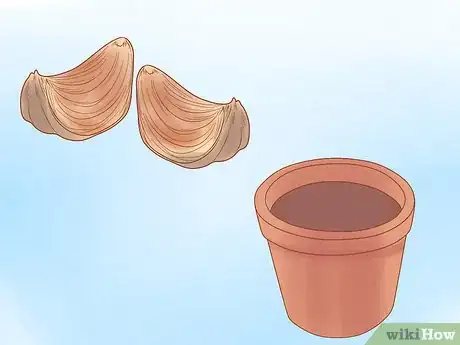
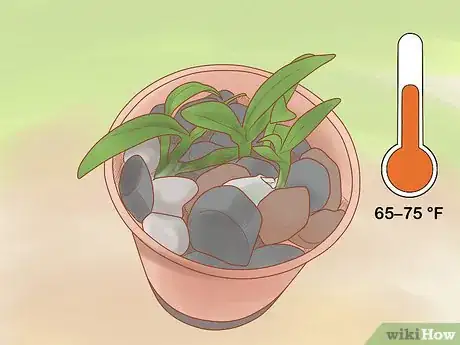

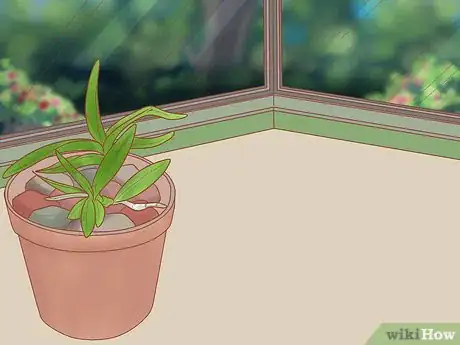

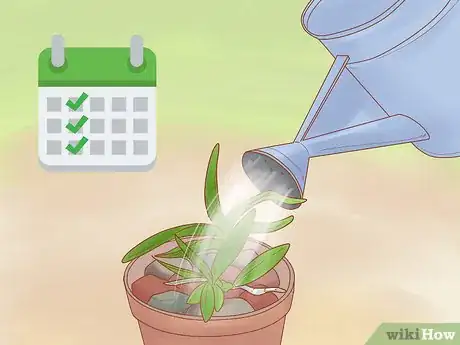
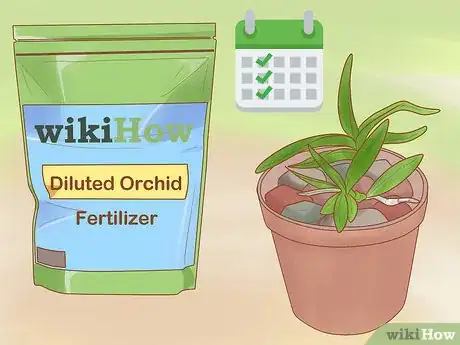
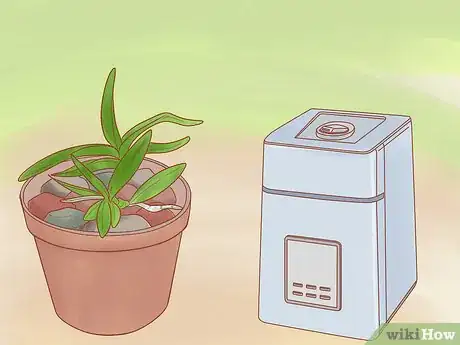
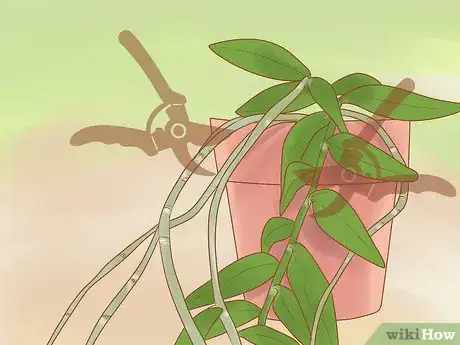





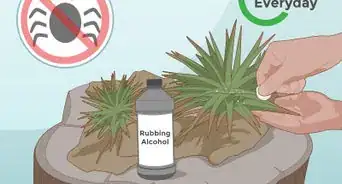



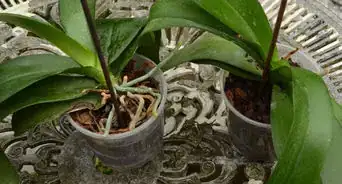





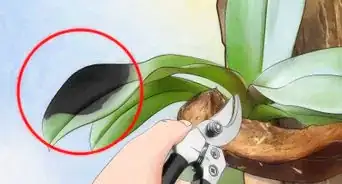
-Step-8.webp)















































